Because I’ve been asked enough times about our June 7th ski trip and have it already composed:
There’s [barely] continuous snow from the Paradise parking lot to camp Muir, but one needs to be careful to stay to climber’s right of the main route, else you’ll be booting a half mile. We left the Paradise parking lot (~5,400′) around 6:30AM on slightly firm snow and arrived at Muir (10,200′) around 11AM.
The top 500′ of snow immediately below Muir was still firm and moderately sun cupped. It’s skiable, but it’s not fun and don’t expect to look pretty doing it. Once we got below the sun cups, the snow was mashed potatoes the rest of the way down. Starting at 6:30 was too late, we should have planned to arrive at Muir by 10AM.
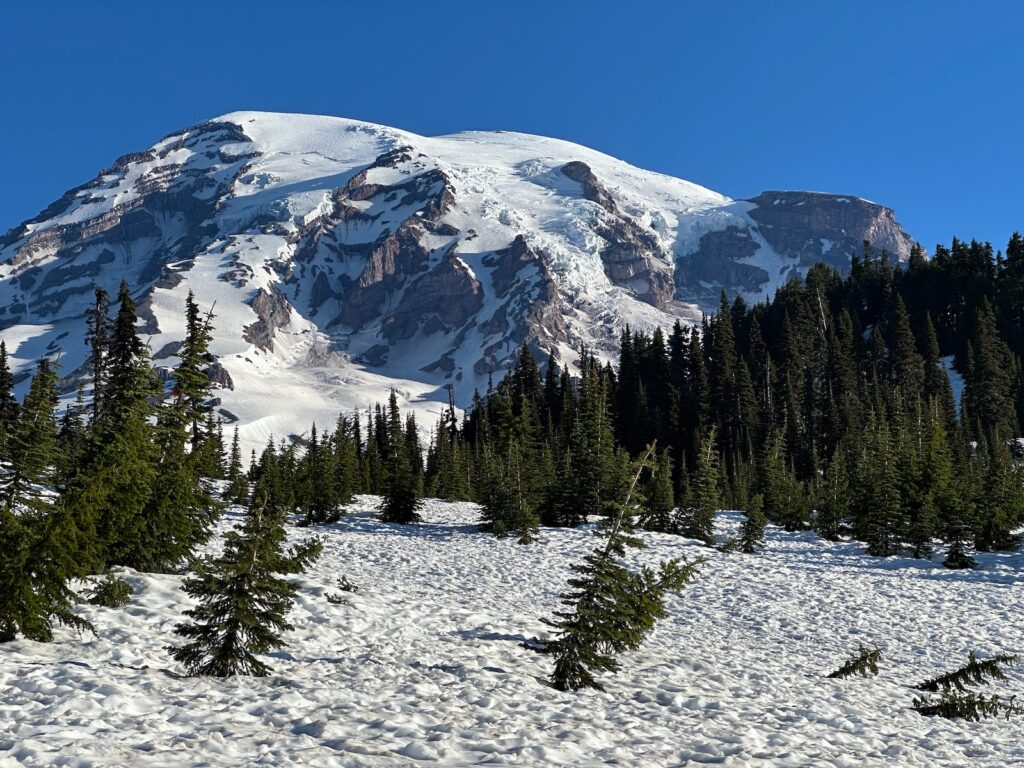
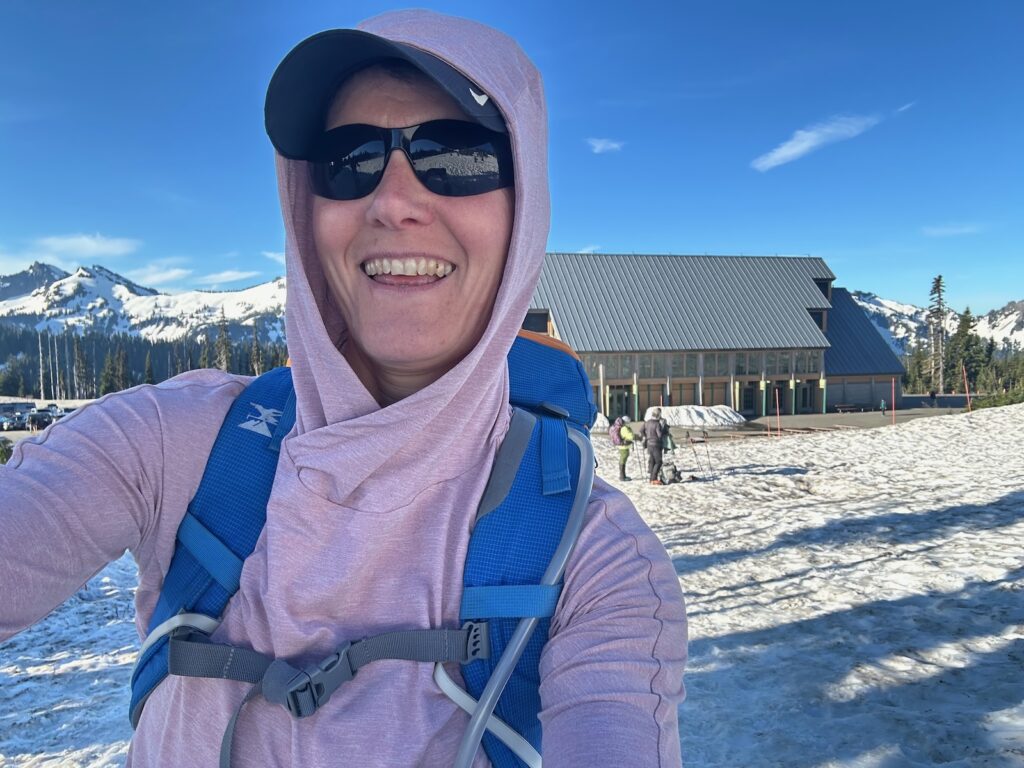
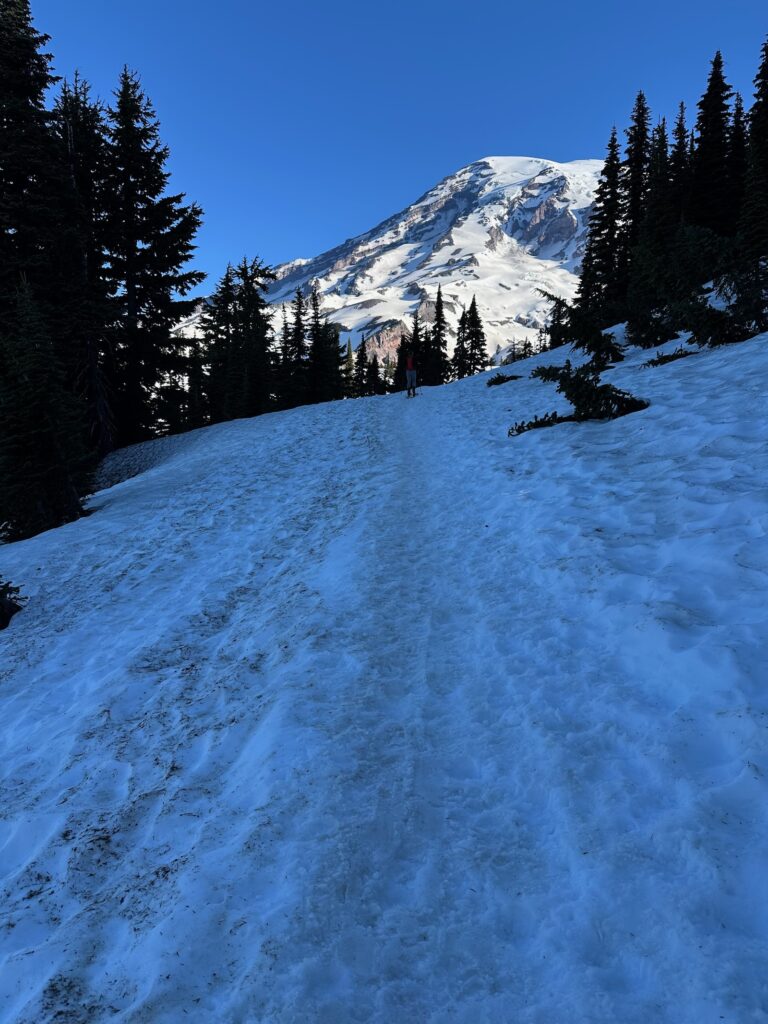

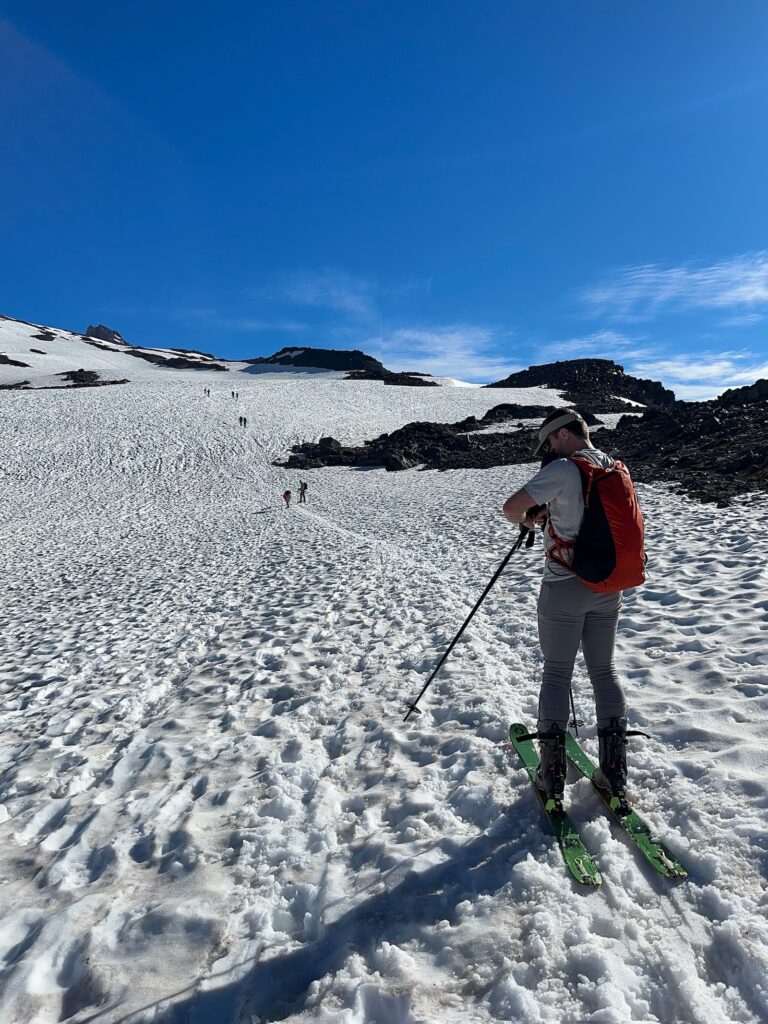

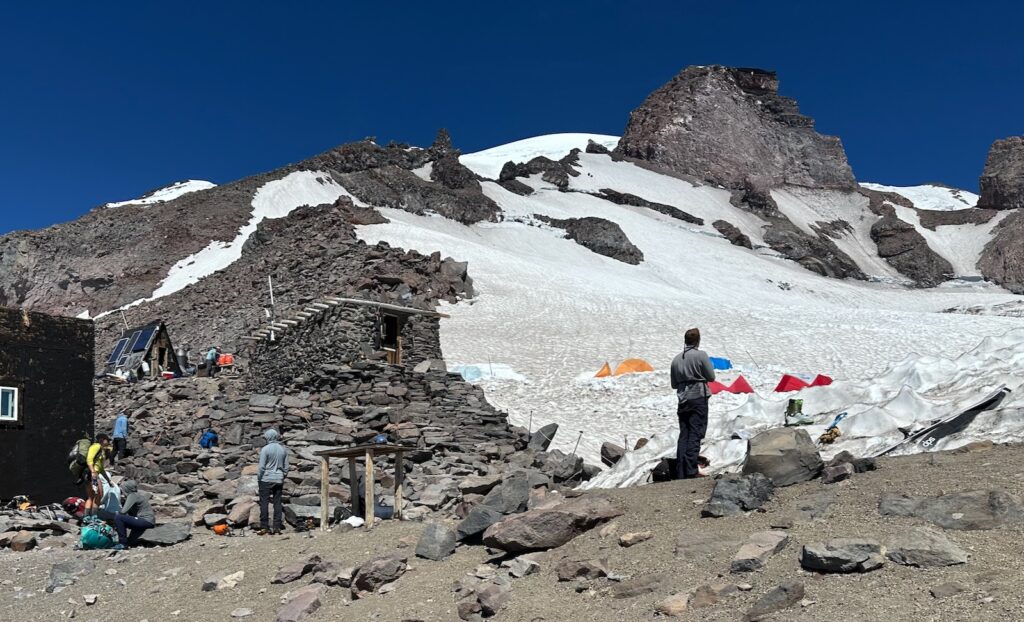
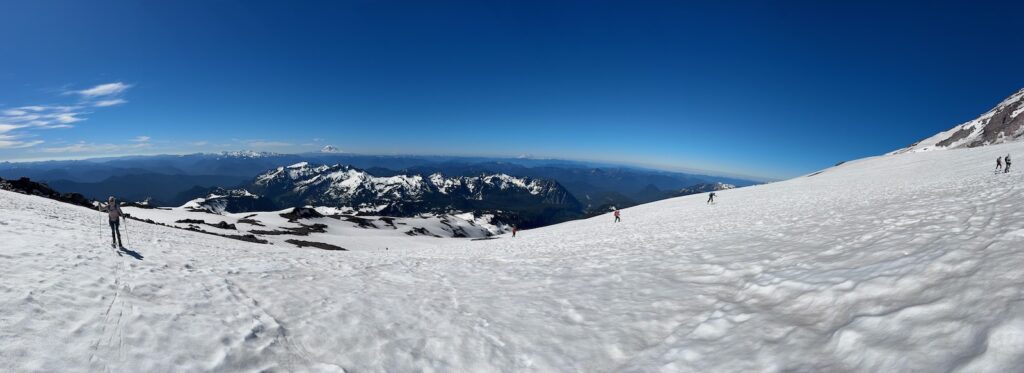
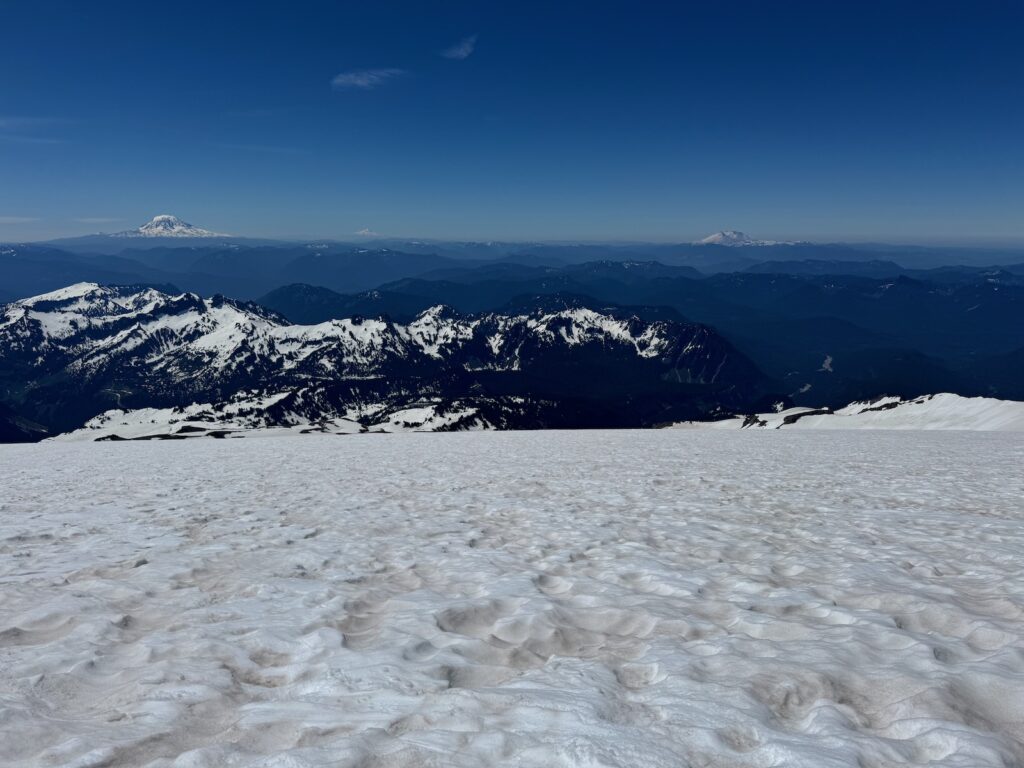

Our best BC ski of the season was Mount St Helens on Friday April 4th. This was our 5th annual ski of Helens. During the week Helens had fresh snow and moderate sunny days–enough snow to cover last weekends ski tracks and enough sun to crust up a nice smooth top layer. We woke at 5:30AM to a crisp 20ºF morning and clear skies. The air stayed below freezing until 5 hours and 5,700′ later, we reached the summit. Often the summit is so windy and cold we don’t stay any longer than it takes us to rip our skins and transition. This year it was merely cold so we put on our puffies and had a leisurely snack.
The main objective of skiing the volcanos is to get the most vertical feet of good skiing. Overnight the snow crusts up. As the sun comes out, it starts warming the snow and softening it. As the crust transitions to corn it becomes very very good for skiing. Not long after it corns, it softens further and becomes mashed potatoes, which is much less fun for skiing. Because of the elevation changes, the snow at lower elevation softens sooner, so it’s usually best to start the descent on crust. Most years, we ski 1,000′ of crust, 1-2,000′ vertical feet of really good snow, and then finish skiing through mashed potatoes.
This year we had nearly 5,000′ of nearly perfect snow on our descent.